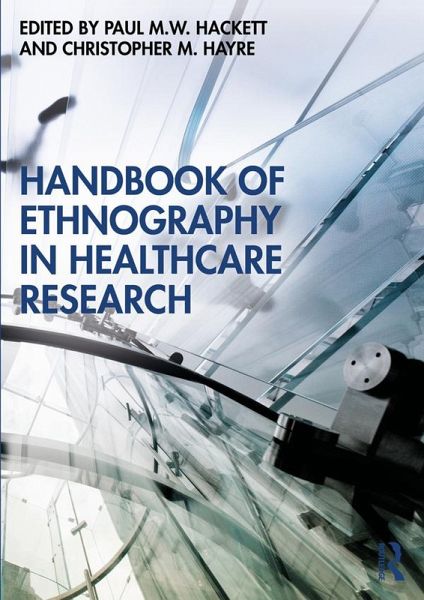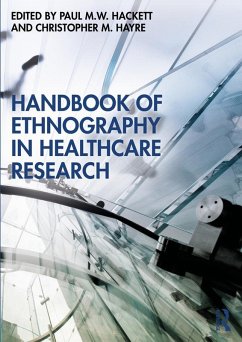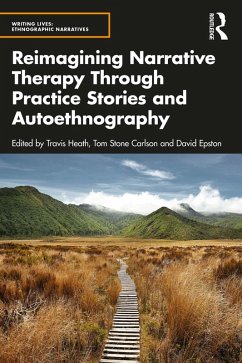
Handbook of Ethnography in Healthcare Research (eBook, ePUB)
Versandkostenfrei!
Sofort per Download lieferbar
61,95 €
inkl. MwSt.
Weitere Ausgaben:

PAYBACK Punkte
31 °P sammeln!
This handbook provides an up-to-date reference point for ethnography in healthcare research. Taking a multi-disciplinary approach, the chapters offer a holistic view of ethnography within medical contexts.This edited volume is organized around major methodological themes, such as ethics, interviews, narrative analysis and mixed methods. Through the use of case studies, it illustrates how methodological considerations for ethnographic healthcare research are distinct from those in other fields. It has detailed content on the methodological facets of undertaking ethnography for prospective resea...
This handbook provides an up-to-date reference point for ethnography in healthcare research. Taking a multi-disciplinary approach, the chapters offer a holistic view of ethnography within medical contexts.
This edited volume is organized around major methodological themes, such as ethics, interviews, narrative analysis and mixed methods. Through the use of case studies, it illustrates how methodological considerations for ethnographic healthcare research are distinct from those in other fields. It has detailed content on the methodological facets of undertaking ethnography for prospective researchers to help them to conduct research in both an ethical and safe manner. It also highlights important issues such as the role of the researcher as the key research instrument, exploring how one's social behaviours enable the researcher to 'get closer' to his/her participants and thus uncover original phenomena. Furthermore, it invites critical discussion of applied methodological strategies within the global academic community by pushing forward the use of ethnography to enhance the body of knowledge in the field.
The book offers an original guide for advanced students, prospective ethnographers, and healthcare professionals aiming to utilize this methodological approach.
This edited volume is organized around major methodological themes, such as ethics, interviews, narrative analysis and mixed methods. Through the use of case studies, it illustrates how methodological considerations for ethnographic healthcare research are distinct from those in other fields. It has detailed content on the methodological facets of undertaking ethnography for prospective researchers to help them to conduct research in both an ethical and safe manner. It also highlights important issues such as the role of the researcher as the key research instrument, exploring how one's social behaviours enable the researcher to 'get closer' to his/her participants and thus uncover original phenomena. Furthermore, it invites critical discussion of applied methodological strategies within the global academic community by pushing forward the use of ethnography to enhance the body of knowledge in the field.
The book offers an original guide for advanced students, prospective ethnographers, and healthcare professionals aiming to utilize this methodological approach.
Dieser Download kann aus rechtlichen Gründen nur mit Rechnungsadresse in A, B, BG, CY, CZ, D, DK, EW, E, FIN, F, GR, HR, H, IRL, I, LT, L, LR, M, NL, PL, P, R, S, SLO, SK ausgeliefert werden.













